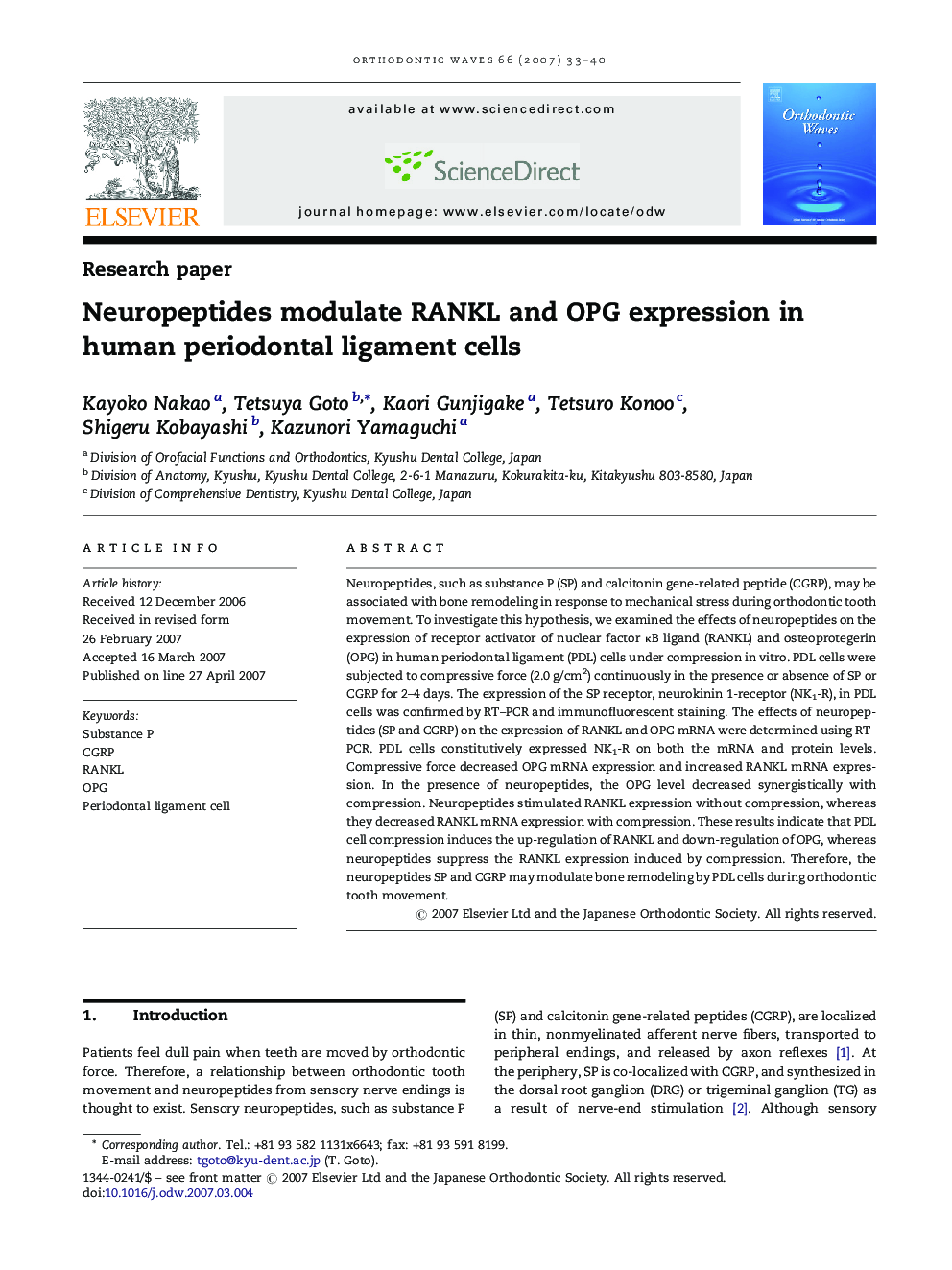| Article ID | Journal | Published Year | Pages | File Type |
|---|---|---|---|---|
| 3170698 | Orthodontic Waves | 2007 | 8 Pages |
Neuropeptides, such as substance P (SP) and calcitonin gene-related peptide (CGRP), may be associated with bone remodeling in response to mechanical stress during orthodontic tooth movement. To investigate this hypothesis, we examined the effects of neuropeptides on the expression of receptor activator of nuclear factor κB ligand (RANKL) and osteoprotegerin (OPG) in human periodontal ligament (PDL) cells under compression in vitro. PDL cells were subjected to compressive force (2.0 g/cm2) continuously in the presence or absence of SP or CGRP for 2–4 days. The expression of the SP receptor, neurokinin 1-receptor (NK1-R), in PDL cells was confirmed by RT–PCR and immunofluorescent staining. The effects of neuropeptides (SP and CGRP) on the expression of RANKL and OPG mRNA were determined using RT–PCR. PDL cells constitutively expressed NK1-R on both the mRNA and protein levels. Compressive force decreased OPG mRNA expression and increased RANKL mRNA expression. In the presence of neuropeptides, the OPG level decreased synergistically with compression. Neuropeptides stimulated RANKL expression without compression, whereas they decreased RANKL mRNA expression with compression. These results indicate that PDL cell compression induces the up-regulation of RANKL and down-regulation of OPG, whereas neuropeptides suppress the RANKL expression induced by compression. Therefore, the neuropeptides SP and CGRP may modulate bone remodeling by PDL cells during orthodontic tooth movement.
